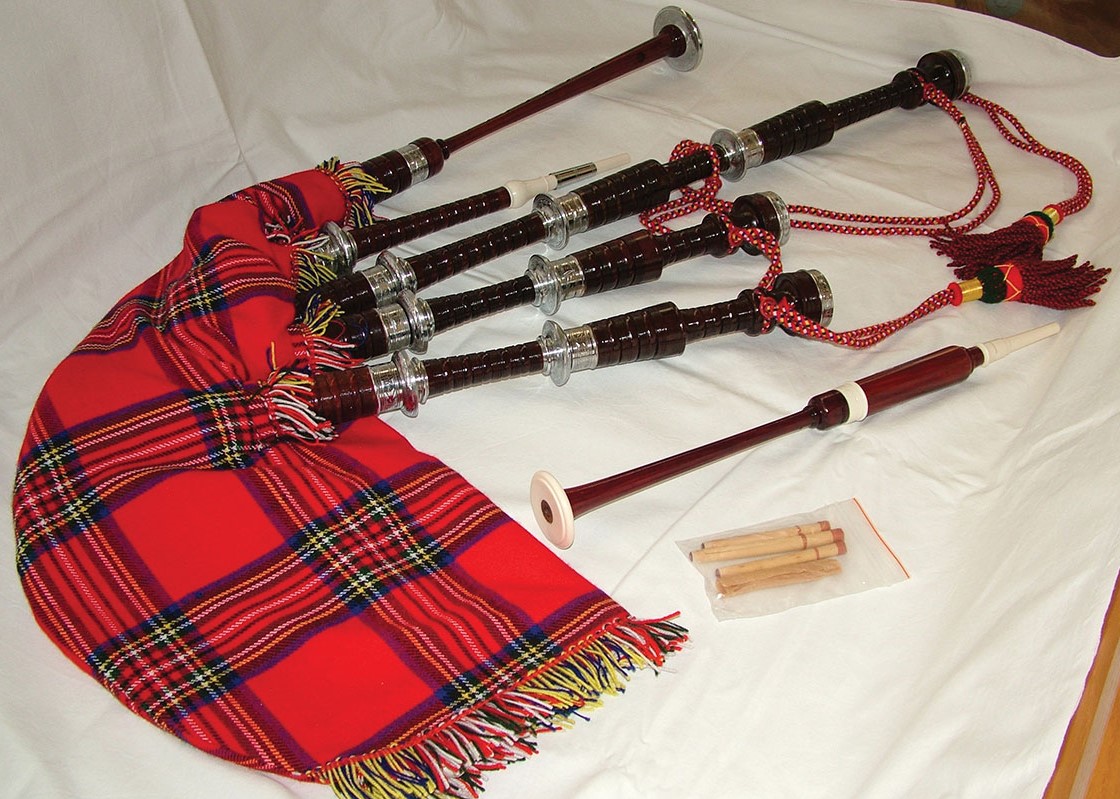
The origins of bagpipes are lost in the mists of time: in the prehistoric era there is evidence of wind instruments made of pipes with holes and reeds to modulate the sound. The presence of similar flutes spread through the various villages of the Mediterranean area from the 3rd millennium BC, while pairs of reeded pipes, known as “auloi” by the Greeks and “tibiae” by the Romans, were widespread in urban areas. An aulos player is depicted in a 5th-century Etruscan tomb in Tarquinia.
The historian Suetonius recalls that Nero loved to play certain instruments, including one in particular, called an “utriculus”, which was made from pipes inserted in a goatskin. The instrument began to develop during the Middle Ages and was consolidated during the Renaissance, establishing itself as a popular musical instrument for playing melodies combined with a simple harmonic accompaniment.
Scapoli, a town in the province of Isernia, inherited the knowledge and techniques for making the instrument from the villages on the Lazio-Ciociaria side of the Mainarde mountains.
Today, it is the only area in Italy that still has a solid and skilled production of zampognas. Master craftsmen continue the Molise bagpipe-making tradition in the districts of Fontecostanza and the old town centre, jealously guarding the secrets of their ancient techniques.
The Zampognas
Two types of zampogna are made in Scapoli: “con chiave” (or “keyed” pipes) and “la zoppa” (or “lame” pipes).
“Keyed” pipes have two chanters of different length and two drones, the longer of which produces the sound, while the second is mute, and double reeds on all the sounding pipes. The woods used include cherry for the stock and olive for the chanters and drones; maple, plum, almond, boxwood and exotic woods are rarely used. For the skin, which is essentially a bag that holds air, car inner tubes covered in faux fleece are now used.
The instruments are made in different sizes: the most popular are 25 and 28 zampognas, which have different tones and are often played together with the shawm. “Lame” pipes are distinguished by their lack of keys and shorter chanters.
The Manufacturing Process
Zampogna making follows established methods and techniques handed down for over a century to younger generations by master craftsmen. After the selection and natural seasoning of olive and cherry wood, the various pieces that will make up the instrument are shaped on a lathe and with simple carpentry tools.
First the stock, the two chanters and the drones are made, followed by rough sanding, smoothing, finishing and polishing. Then the bag and the double reeds are prepared, the various parts are assembled and, finally, the instrument is tuned.
The local area
The town of Scapoli, in the province of Isernia, presents itself to visitors at the foot of the Mainarde range, with a wonderful view over the Volturno valley. The town, composed of narrow streets and small squares, which was founded by the monks of San Vincenzo al Volturno in the late 10th century, is characterised among other things by its rampart pathway, a route around the old town centre along the perimeter of the Lombard fortifications.
In these places the sounds of the zampognas, the master craftsmen that make them and targeted institutional promotion of the area have created added value for the region in terms of its economy, culture and tourism. The International Museum of the Zampogna is a historical presentation of the Molise zampogna and aerophones from all over the world. Here visitors can see zampognas from all places and times, together with wind instruments of rare beauty, and examine iconographic documents, literature and period photographs.
By Camera di Commercio di Isernia with Unioncamere



